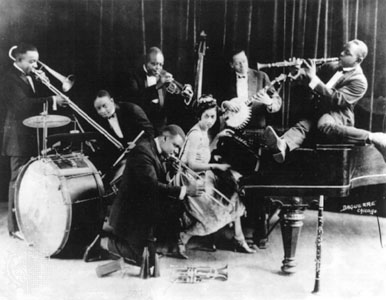10.4 Instrumental formats of Cuban music of the 20th century (1930-1958).

Although jazz had been making its mark in Cuba since the late 19th century, it wasn’t until the 1920s that the first jazz bands began to emerge. In 1929, the first Cuban big band, called “Hermanos Castros,” was formed under the direction of saxophonist Manolo Castro. It included brass, saxophone, and rhythm sections.
The instrumental Jazz Band format introduced in Cuba to perform North American music connected us with musical instruments that had been excluded from the Cuban Traditional Orchestra, including the saxophone and drums. However, it soon began to produce Cuban music and pasodobles, alternating with foxtrot, the Charleston, and later swing and other more modern styles. This group began to include rumbas and salon congas in its repertoire, as well as boleros and guarachas. These orchestras were staffed by technically skilled musicians, virtuoso instrumentalists, and orchestrators who made arrangements of popular Cuban musical genres.
During these years, septets expanded their instrumental format by doubling or tripling the trumpets, adding piano and tumbadoras, which they shared in part with the bongo, increasing the vocal chorus, and increasing the number of musicians. This new form of grouping or instrumental format was called Conjuntos. The bell or cowbell also played a prominent role, playing an imperious note in the change of pace in the montuno.
These groups expanded to include large venues and open-air spaces. The Conjuntos grouped together professional musicians, who developed great instrumental virtuosity, especially on the piano and flute.
Combos also emerged during this time, instrumental formats developed in Cuba in the late 1950s. Their origins lie in the custom of putting together a small musical group with basic instruments so that several soloists could perform variations on a theme.








